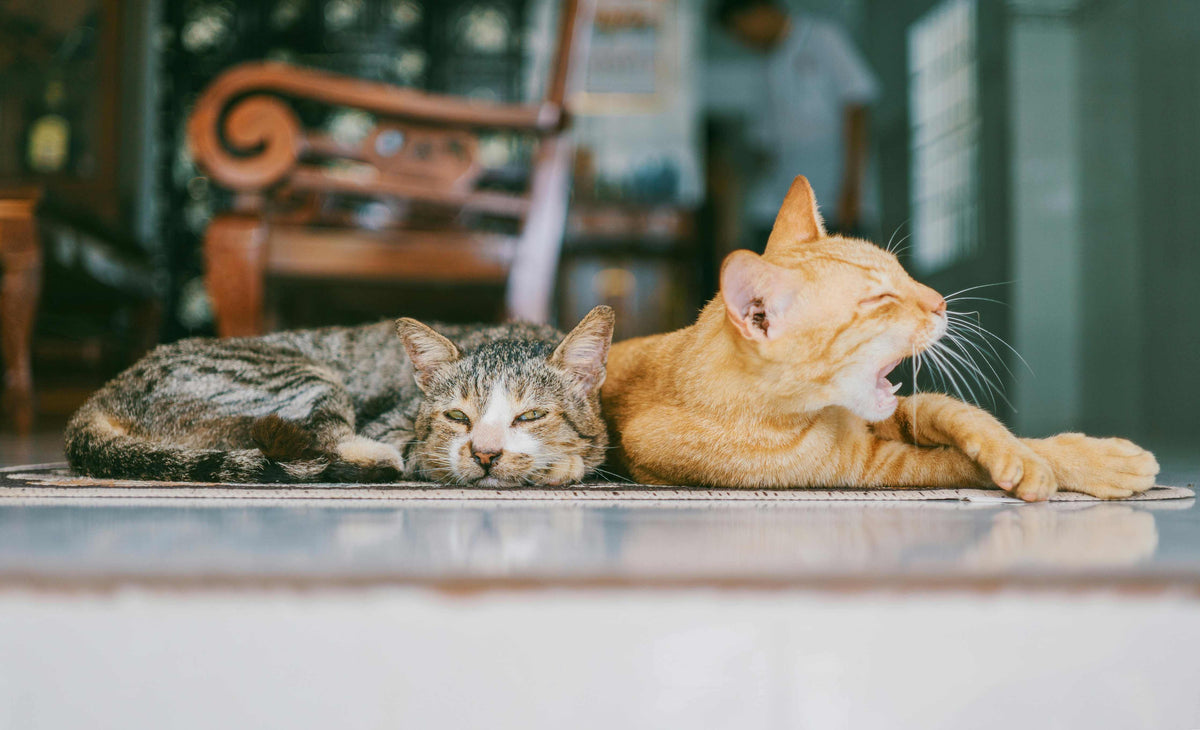

Caring for multiple cats in one home requires more than just extra toys and cuddles. From feeding to territory, dynamics shift with every added feline. And one of the most common pain points for multi‑cat owners? The litter box. Missteps in setup and maintenance can lead to accidents, fighting, and stress for both pets and people. This guide on how to manage multiple cats offers practical, easy‑to‑implement strategies to keep your home clean and your cats happy.
How to Care For Multiple Cats: Understand Cat Hierarchy and Territory
Cats are territorial by nature. In multi‑cat homes, social order impacts everything—from where cats sleep to how they use the litter box.
Observe Behavior: Some cats are more dominant and may block others from shared spaces.
Respect Boundaries: Offer high perches, separate beds, and hideouts.
Spread Feeding and Toilets: Avoid clustering activities in one spot; give each cat space.
Understanding how to care for multiple cats and how your cats interact helps prevent stress and litter box avoidance.

Litter Box Rule: One Per Cat, Plus One Extra
Knowing how to care for multiple cats in the home is important for both you and your cat, and this golden rule helps prevent most litter box issues in multi‑cat households:
3 Cats = 4 Boxes: Spread them in different rooms for privacy.
Avoid Lining Boxes Together: Side-by-side boxes feel like one large shared box.
Size & Height Matter: Cats of all sizes use them comfortably; LoftyLoo’s raised platform supports easier scooping.
- Covered vs. Uncovered: Some cats prefer privacy, while others like open boxes—observe your cats and offer both options.
- Keep Boxes Accessible: Avoid placing litter boxes in hard-to-reach or noisy areas; make it easy for all cats to find and use them.
When each cat has their own clean space, accidents and conflict drop dramatically. Caring for multiple cats doesn’t have to mean constant chaos. With the right setup, your home can be a calm, clean space for all your feline companions.

Clean Often—Even More Than You Think
In a multi‑cat household, waste buildup happens fast. Cleanliness is key.
Scoop Twice Daily: Keeps odors down and cats using the box.
Deep Clean Weekly: Empty, wash, add fresh litter.
Choose Unscented Clumping Litter: Cats dislike strong fragrances.
A cleaner, well-maintained litter setup creates a more peaceful, odor-free environment—and a much happier household for both cats and humans.

Prevent Conflict with Litter Box Placement
Placement can reduce blocking and bullying around litter boxes.
No Corners or Tight Spaces: Cats need at least two exits from each box.
Separate from Feeding Areas: Cats don’t like elimination near food or water.
Use Quiet Zones: Laundry rooms, hallways, or bathrooms work well.
LoftyLoo’s design provides classic placement flexibility with added scooping convenience.

Introducing a New Cat to the Household
Adding a new cat to your home requires time, patience, and a thoughtful approach to ensure a smooth transition for both the newcomer and your existing cats.
Quarantine First: Keep the new cat in a separate room with food, water, and litter.
Swap Scents: Exchange bedding between cats to build familiarity.
Slow Visual Introductions: Use a baby gate or cracked door before full interaction.
Gradual introductions reduce conflict and encourage smoother long-term relationships.

Watch for Warning Signs of Cats in Stress
Pay attention to shifts in behavior—they often signal unresolved issues:
Frequent Accidents: Could mean illness or conflict.
Avoidance of One Area: Cat may feel bullied or blocked.
Over‑grooming or Hiding: Possible signs of anxiety.
Tense Mealtimes: Watch for cats guarding food bowls or refusing to eat near others.
Sudden Aggression: Hissing, swatting, or chasing can signal unresolved tension between cats.
If you notice these, reassess box setup and cat relationships.

Cat Training with Patience and Positivity
Training in multi-cat homes doesn’t need to be intense or time-consuming, but it does need to be consistent and calm. Whether you’re redirecting a territorial cat or encouraging shy cats to explore, how you interact matters.
Use Treats and Praise: Reward calm behavior around other cats and during litter box use.
Redirect, Don’t Scold: If one cat blocks another from a litter box, gently interrupt and separate.
Short, Positive Sessions: 5–10 minutes of interaction daily can improve trust and reduce tension.
With time, even the most stubborn feline personalities can learn new, cooperative habits.

Consider Cat Personality Differences
Just like people, cats have different preferences. Adapt your setup accordingly:
Shy Cats: Prefer secluded, covered litter boxes.
Bold Cats: Enjoy open views and large spaces.
Elderly Cats: Benefit from easy access—LoftyLoo helps prevent painful bending.
High-Energy Cats: May need boxes placed away from play areas to avoid distractions and encourage proper use.
Adapting to each cat’s needs supports harmony and solution longevity.

Best Enrichment for Multi-Cat Homes
Keeping cats mentally and physically engaged reduces behavioral issues.
Interactive Toys: Laser pointers, treat puzzles, and wand toys keep cats busy.
Climbing Options: Cat trees and window perches reduce conflict by offering vertical space.
Scheduled Play: Build playtime into daily routines to burn energy and bond.
Active cats are happy cats—and happy cats are less likely to become bored, anxious, or territorial, which helps them get along better in multi-cat households.

The Power of Elevated Litter Boxes
Elevated boxes like LoftyLoo offer key advantages in a multi‑cat home:
Dog-Proof: Keeps dogs from digging into cat litter bins.
Easier Cleanup: Elevated platform reduces tracking, simplifies mess detection.
Physical Ease: Ideal for cats or owners with mobility challenges.
Choosing a functional design helps keep litter chaos in check.
Want to improve both safety and daily care? Try LoftyLoo, the raised litter box designed to keep your cat clean, your home organized, and your routine easier.

Real‑Life Routine That Works
Here’s a sample daily routine to foster calm and cleanliness:
Morning
Feed each cat in their area.
Scoop all litter boxes.
Observe interactions for signs of stress or conflict.
Afternoon
Refresh water bowls.
Group or individual play sessions to relieve tension.
Evening
Scoop again before bed.
Offer quiet cuddle time individually or collectively.
Routine builds consistency and trust for cats and humans alike.

Myths About Multi-Cat Households—Debunked
Let’s clear up some common misunderstandings:
Myth: "Cats are solitary and don’t want companions."
Fact: Many cats thrive with other feline companions if properly introduced.Myth: "One litter box is enough if I clean it often."
Fact: Space and privacy are as important as cleanliness.Myth: "Fights mean I have to rehome one."
Fact: Fights are often preventable with better territory and routine management.
Understanding the truth can help you avoid unnecessary stress.

Final Thoughts: Your Home Can Be Clean, Calm, and Joyful
Sharing your home with multiple cats doesn’t have to mean chaos. With extra litter boxes, thoughtful placement, daily routines, enrichment, and a lifted design like LoftyLoo, you can minimize conflict and keep your environment clean.
By designing your space around cat psychology, comfort, and accessibility, every cat—and every human—can thrive together.
Take it one paw at a time —small changes can make a big difference in your daily life. Your cats will thank you with less stress, fewer accidents, and more moments of calm connection.


